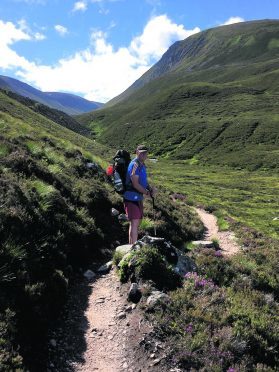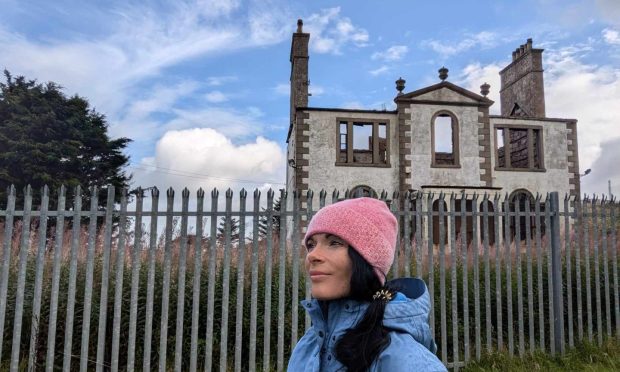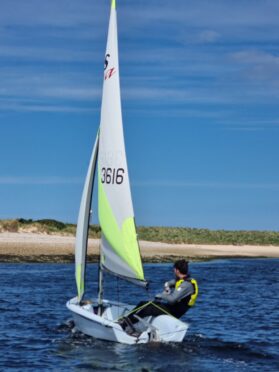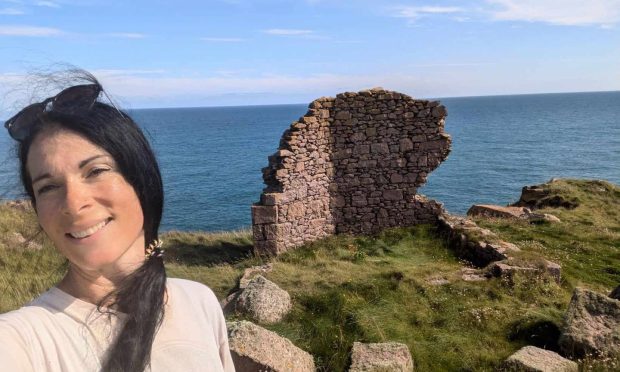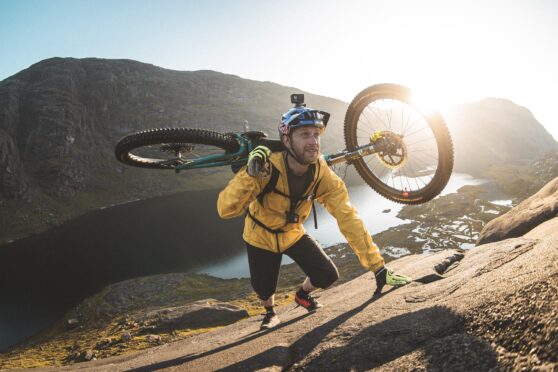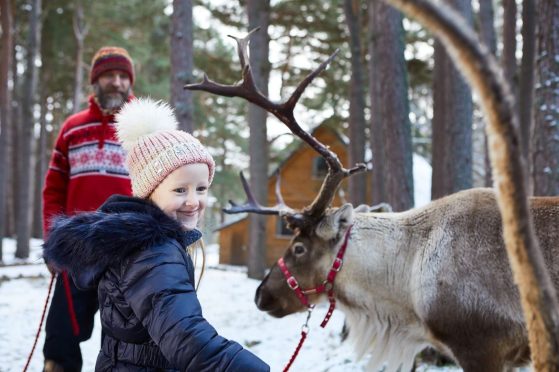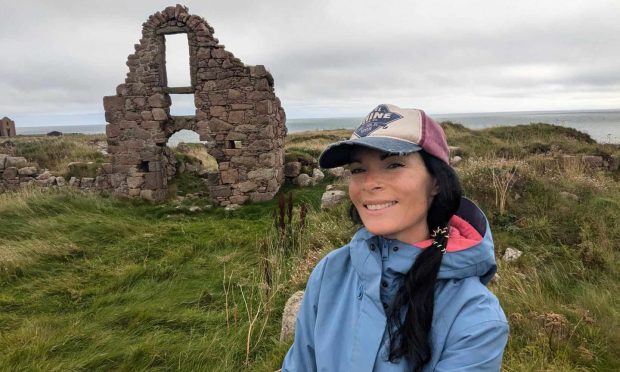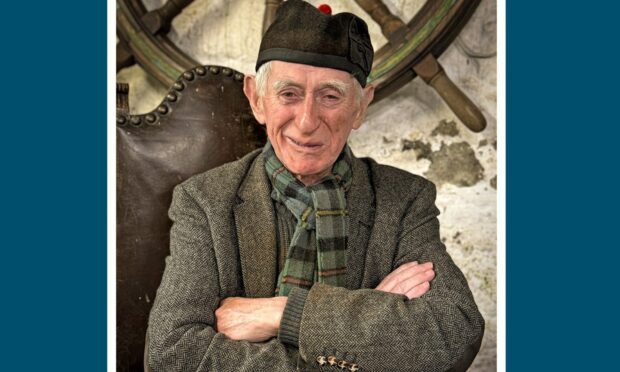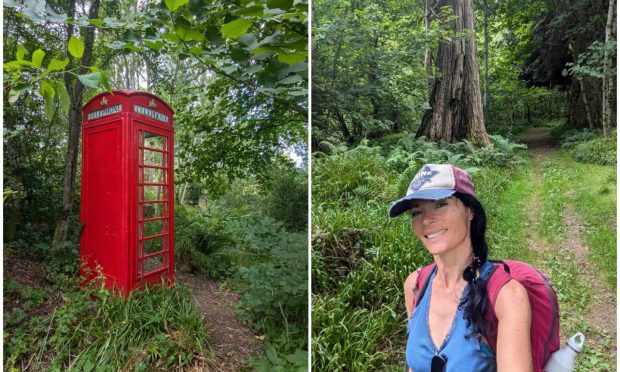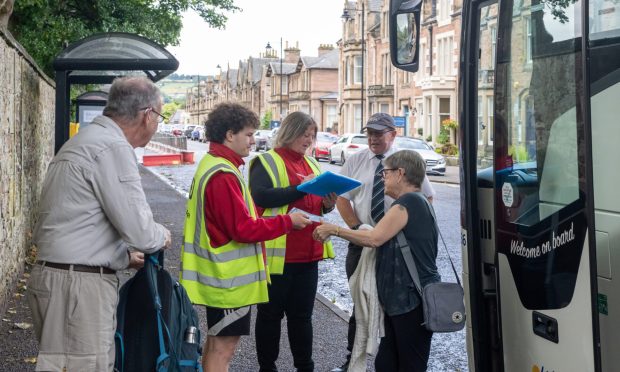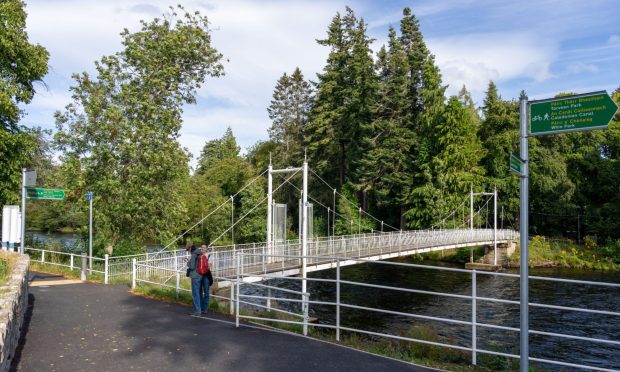Using an old drover’s route map and the help of a book, one Highland couple spent nine days following in the footsteps of these tough lads. Mandy Rush shares tales from their adventure.
Scotland’s drovers were a hardy, tough bunch. For more than 200 years, the job of the drover was to find safe passageways and paths through remote hills and glens for cattle and other livestock which they would walk to the nearest big market to sell.
Some of these journeys involved days of travelling, often through wild terrain with very little in the form of shelter from the elements.
For Mandy Elizabeth Rush, who lives in “the last house before the lighthouse” in Melvaig, Wester Ross, following in the footsteps of the drovers became a dream come true. Although not a Highland lass by birth, her heart is clearly in the Highlands . . .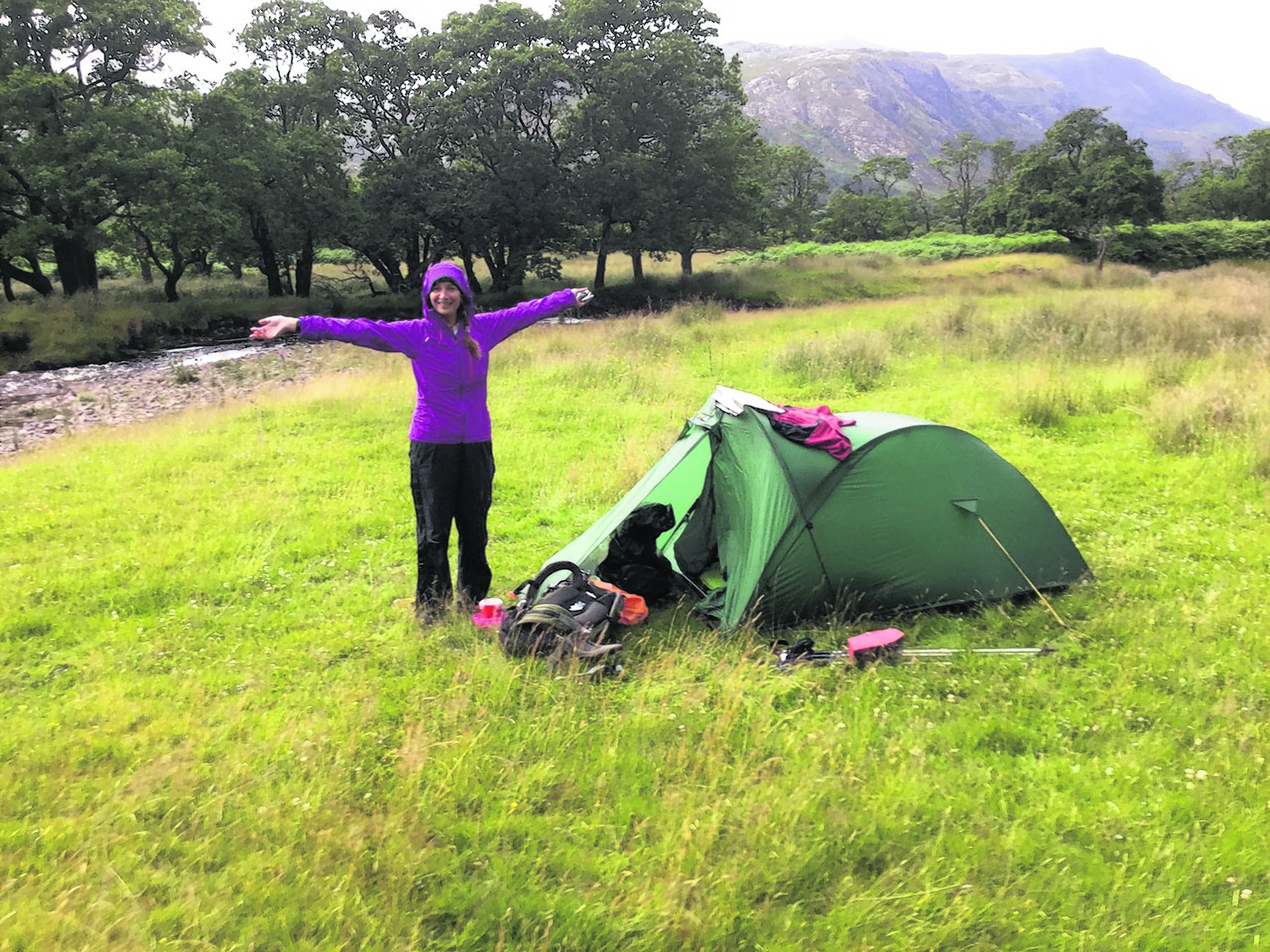
Born in the village of Plean near Stenhousemuir, her passions include travel, adventure, photography, running, fitness and wildlife. After living for many years in Kenya, Germany and Central America, five years ago she returned to Scotland and settled in Wester Ross.
“I wanted to explore as much of the local area and history as I could and became fascinated by the crofting lifestyle, which in turn led me to learning more about the life of the drovers and the highly sought after black Highland coos which they used to collect together throughout the Highlands and Western Isles and drove down to the trysts,” said Mandy.
“Trysts, in other words markets, were to be found in Dingwall and Beauly, but the big tryst was in Crieff. It ultimately moved further south to Falkirk which essentially meant Stenhousemuir’s tryst.
“As Stenhousemuir is just four miles from the village where I was born and bred, I decided to test my mettle by walking the drover’s route.”
Mandy turned to the book, The Drove Roads of Scotland by A.R.B. Haldane, to select her route.
“The book has been my wee ‘bible’ of the history and the potential routes. It contained a map and lots of information on routes, collected from old documents and some first hand accounts from old men who had been, as young laddies, drovers or sons of drovers.”
Mandy and her partner Cory decided to trace an old drove route from Poolewe to Stirlingshire using Haldane’s book as their guide. “We packed the book in our rucksacks along with our sleeping bags and dreams of black pudding – good drover’s fare – and set off.”
DAY ONE
We left Poolewe in the early morning, when the burns had aspirations to be rivers after the night’s heavy rain. We headed out to Kernsary over the Strath to Letterewe. Letterewe, sleepy in its Sunday morning fug, with wide gravel roads and deciduous woods, was a delight after the sheep paths and wilderness of earlier.
We started climbing the goat paths when I slipped in mud, landing like a giant purple beetle on my bag, limbs wriggling in the air. My pack was so heavy I couldn’t get up until I was disconnected from my shell. We examined the ankle and it had already started to resemble a duck egg, so now slowly we hobbled on while the midges attacked me – the weak member of the herd!
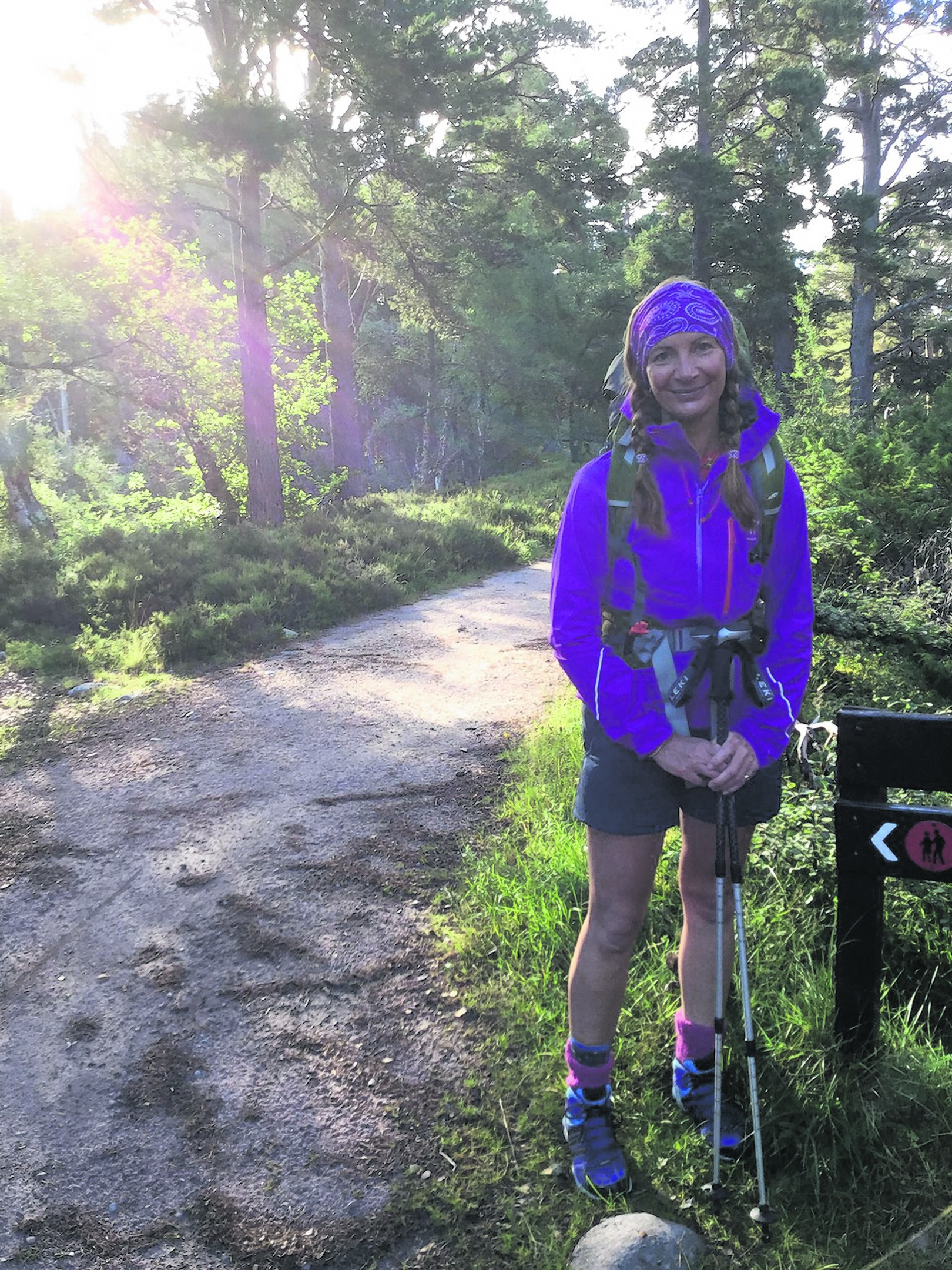
DAY TWO
From our comfy meadow in Kinlochewe we started to scale the most beautiful pass in Scotland, Glen Docherty, walking poles out to aid us with the gradient and the ferocious wind and rain being funnelled down the pass. With our bags weighing 15kg we trudged, trudged, trudged. My only focus? The food stash which Cory had hidden two days before.
The delicacies were a surprise and I couldn’t wait to scale the bealach and enjoy a second breakfast. Cory summited first and headed through the gates of the water board site and started lifting rubbish. Shredded wrappers, shredded papers, shredded everything. The local pine marten family had eaten themselves sick at their stramash on our stash. We were gutted so had to settle for cuppa-soups.
We walked onwards towards Achnasheen, where small black Highland cows were gathered in a stance. By now I had a split personality, foot and me. Foot was the most vocal and was screaming “No more!” Nestled in the shelter at the train station, salvation arrived in the form of a shellfish van. Jess, the driver, rescued us and drove us to Inverness where we ate enough for six people, peeled ticks off each other’s bodies and found a slug nestled in our backpacks.
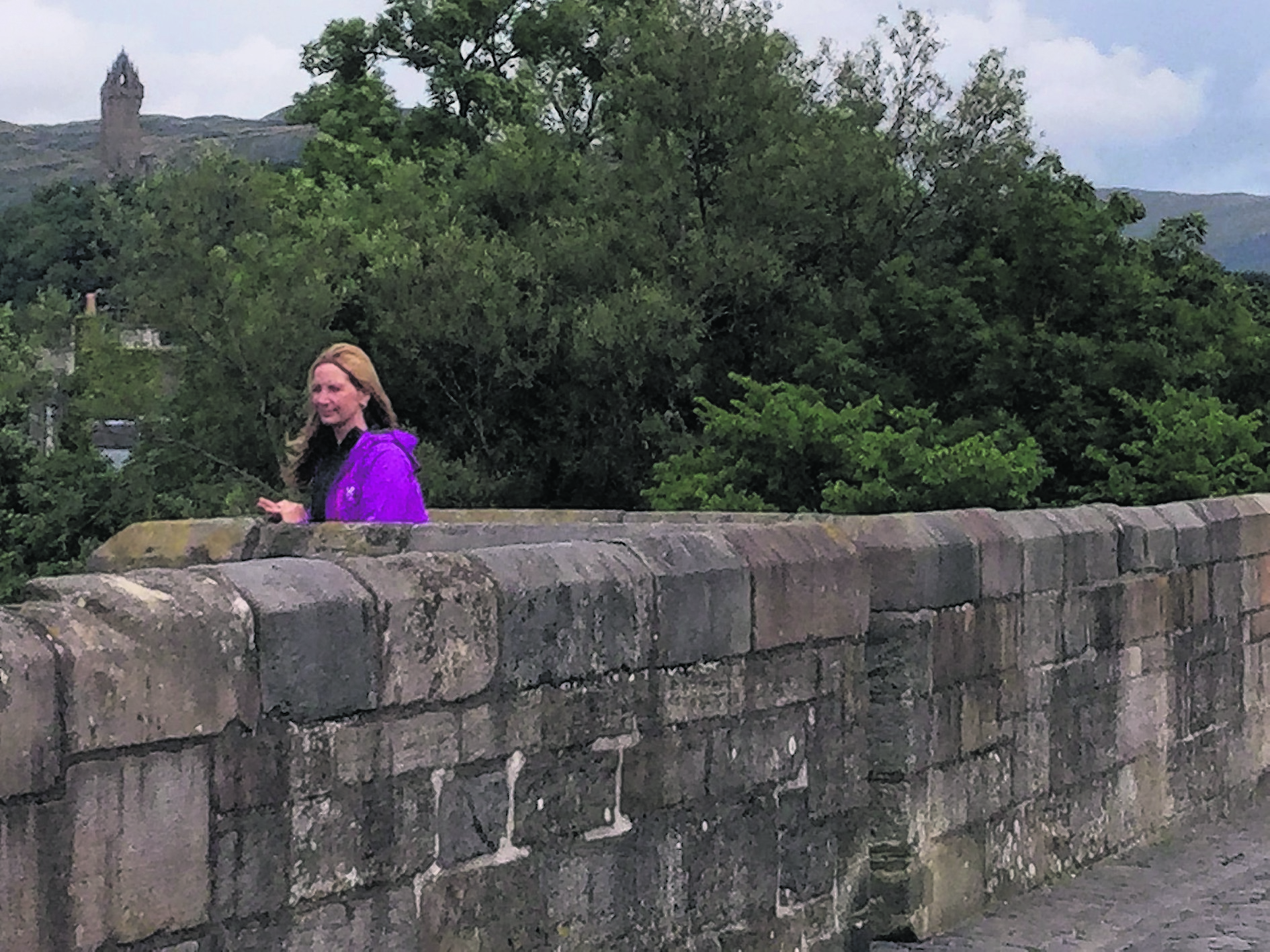
DAY THREE
Having walked along the General Wade route out of Inverness, past Milton of Leys, we had found a beautiful meadow, where the cattle lowed in the distance, the dew twinkled in the grass, the birds fluttered and chirped, buzzards called and the sun shone down on our little corner of paradise.
I awoke to a goose egg. We now had four entities walking the Old Drove Road. Me, C, Foot and Goose Egg. A goose egg instead of an ankle. Clearly the therapy of more than 15 miles on an injured ankle while carrying a 15kg pack wasn’t working.
Next stop was Moy and I was struggling. It took two and a half hours to travel the six miles there. The thought of a pub lunch was spurring me on but the pain got too much so we caught a bus to Aviemore and agreed rest was best for my egg and foot.
DAY FOUR
Aviemore was full but we managed to get a pitch for the tent. Rain was forecast and at 3.30am God turned all the lights on and off then opened the floodgates. We wondered if our ark would survive. It was wild. Sheet lightning, forked lightning, torrential rain, blackness.
The monsoon conditions continued next day but by the afternoon had departed. The day at base camp had been worth it. Tomorrow the adventure resumed.
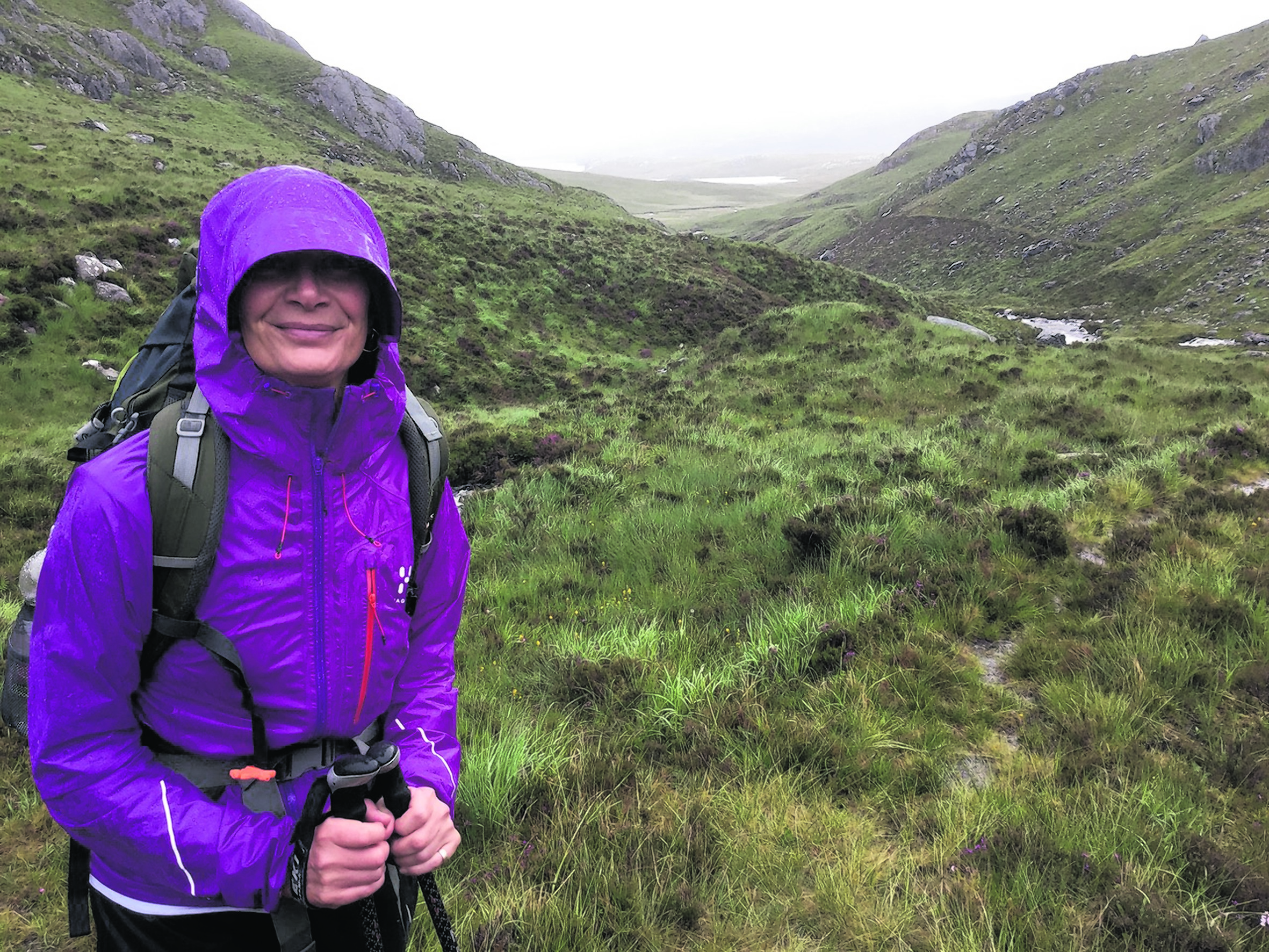
DAY FIVE
Our day to tackle the Lairig Ghru. We set off towards Rothiemurchus, through capercaillie country and gorgeous pine forests, slowly, progressively climbing up, while the world was asleep. The sun was out, the humidity high and the birds were singing. We saw dragonflies skimming along the moors, tadpoles in puddles, giant fat frogs jumping into the wild flowers at the side of the purple lined path.
The summit is where the terrain changed. Huge chunks of red limestone boulders. Appearing rectangular, as though hewn by a stonemason, like Lego for giants, piled on top of each other, unstable and ankle unfriendly; torture. The highland Coos wouldn’t have liked this section; hard surfaces hurt their feet and wore out their hooves.
DAY SIX
We entered a beautiful gorge and I had first tears. We had tucked ourselves into our tent in a breeze and with beautiful views down the source of the Dee. We awoke to a siege. Every midge in the Glen Dee area had received a memo about the green little larder that had appeared at the cairn.
We had split this day into bridges but someone had forgotten the bridges! We came to the river, swollen from yesterday’s rain, which led to tears. Despite everything Foot had been through, it hadn’t been wet. My new Adidas Gore-Tex boots had worked miracles. I couldn’t ford the river without boots, Foot would scream in agony, I couldn’t face walking 15 miles with wet feet and trench foot being added to Foot’s afflictions. Hence, tears.
After my tantrum and tears I had to face the crossing. C took my bag; I removed my socks, put the boots back on and with arms extended by poles navigated the river. Having reached the other side using boulders my feet were still dry. The relief was short lived. We soon had to ford again, and again as we walked along Glen Tilt and down towards Blair Atholl.
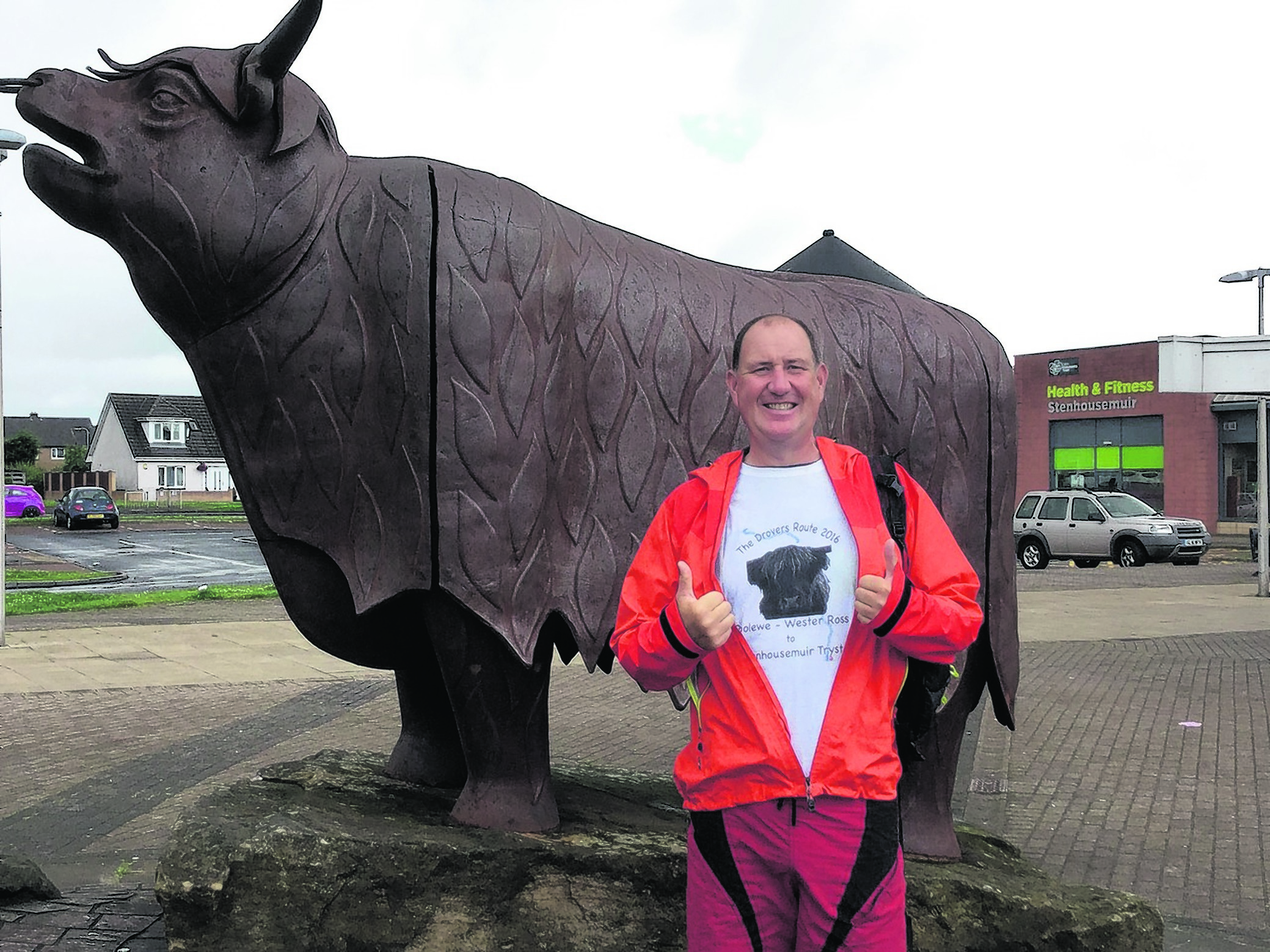
DAY SEVEN
I developed hound dog skills. I was sure I could smell a bacon sarnie but thought it was just fantasy until we came upon a scout camp from where the intoxicating aroma of sizzling bacon was arising. Because of Foot we caught a train to Dunblane from Blair Atholl. We walked passed Andy Murray’s gold postbox, bought posh cheese, crisps, tattie scones and oatcakes and headed up the old drovers’ path to Sheriffmuir. We saw a red deer silhouetted in the late afternoon sun in a little field and steadily headed up the ripe raspberry-lined path to the Gathering Stone and bed.
DAY EIGHT
We woke at 3am and despite pouring rain, I needed a toilet break. I battled with multiple zips and, forsaking my boots, hobbled on to the lush, squelchy grass. I froze. I heard a rustling in the grass in the dark of the night. Something close, something big which snarled and sort of barked before running away.
Then “snark, snark, snark.” The beast was crying out in a rage, from the forest. We had no illusions of the false security the tent offered. A few hundred yards from the battlefield memorial of 1715 where so many died and the Gathering Stone. We held our breath. Eventually the beast was quiet.
We walked over Sheriffmuir, down into Bridge of Allan, over the Causewayhead, over the old Stirling Bridge, not long now to the tryst.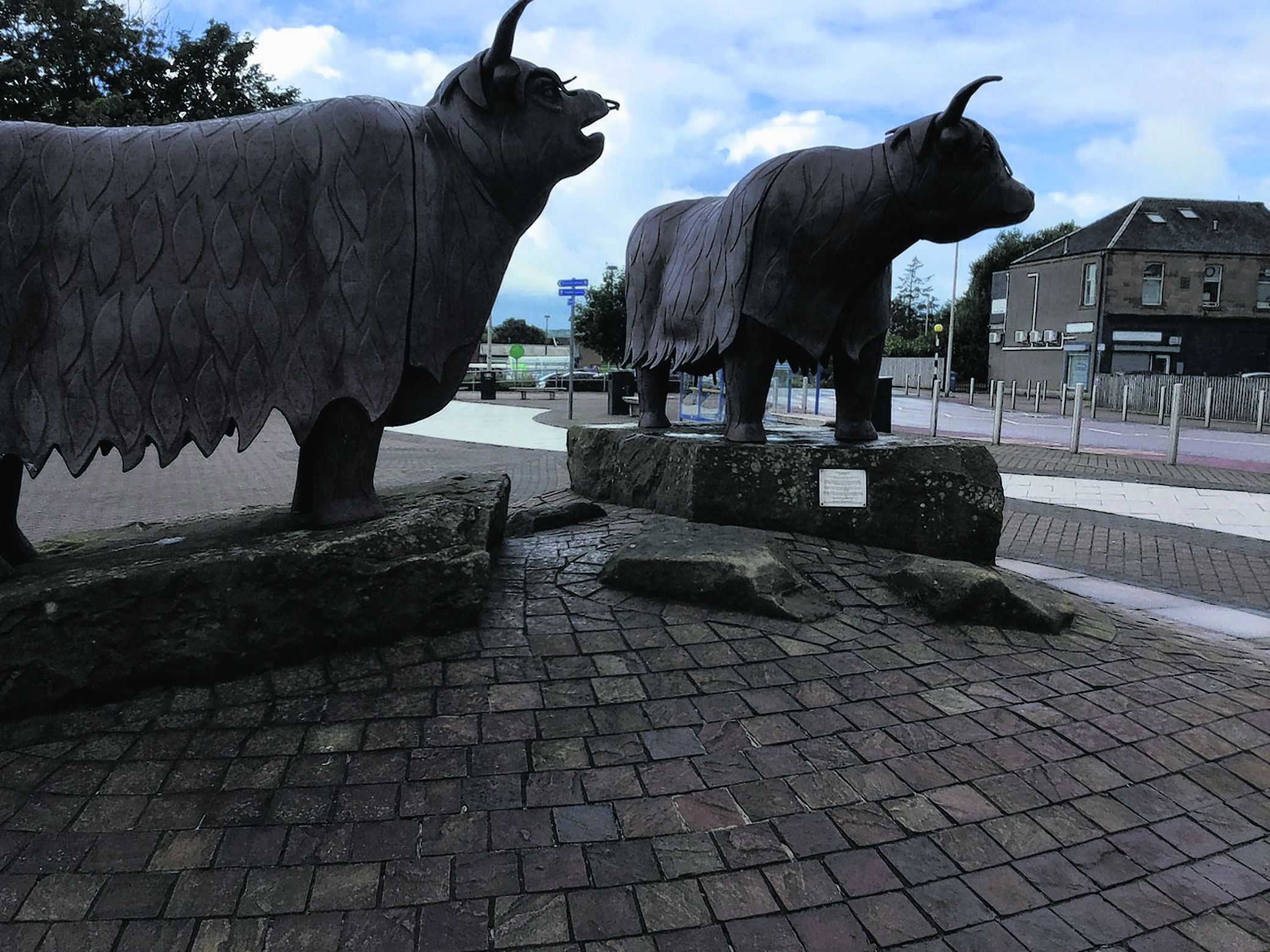
DAY NINE
We awoke refreshed after a shower and proper bed at my mum’s house in Plean and headed out of the village early, along more raspberry-lined paths and to C’s delight the welcoming calls of the yellowhammers.
We skipped along, unburdened with the heavy rucksacks. Before long we were walking through the Tryst Golf Course, along Tryst Road until finally we reached the Highland coos, symbols of McCowan’s yummy toffee and even further back the Highland coos which for decades in late summer had arrived at the Stenhousemuir Tryst in their tens of thousands.
Looking back over their adventure, Mandy said: “We travelled a distance of approximately 220 miles, 150 of which was on foot. We developed a deep respect for the drovers of the Highlands, who would walk no more than 10 miles per day to ensure the coos had enough time to feed and not lose too much of their weight.
“They slept with their beasts, under the heather and bracken wrapped only in their plaid. They ate plain fare of oats, water, maybe some whisky and sometimes after letting the blood of the coos, they made black pudding. It would have taken them over 22 days to walk our drove route and yet I hadn’t quite survived day one.
“It was a taster for our next adventure, the 2,650 miles of the Pacific Crest Trail of America. We fly to the states in April and will walk for approximately five months from the Mexican border into Canada up the backbone of America, a true wilderness adventure.”
You can follow their adventures via www.heandshehikethepct.wordpress.com
